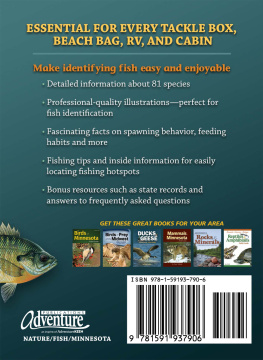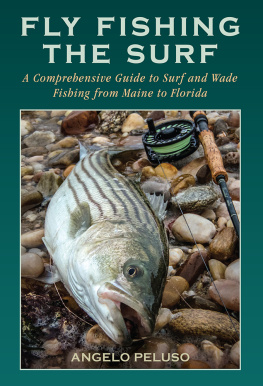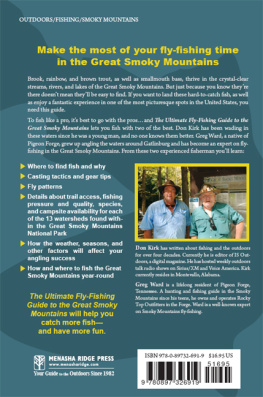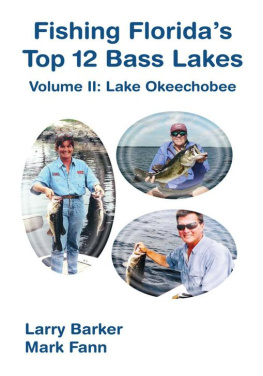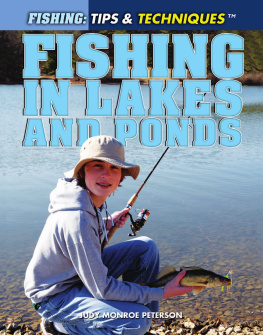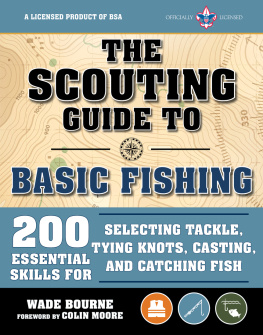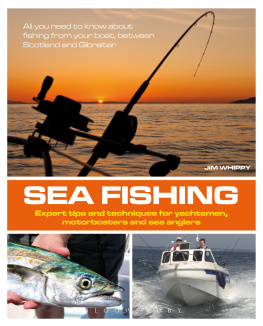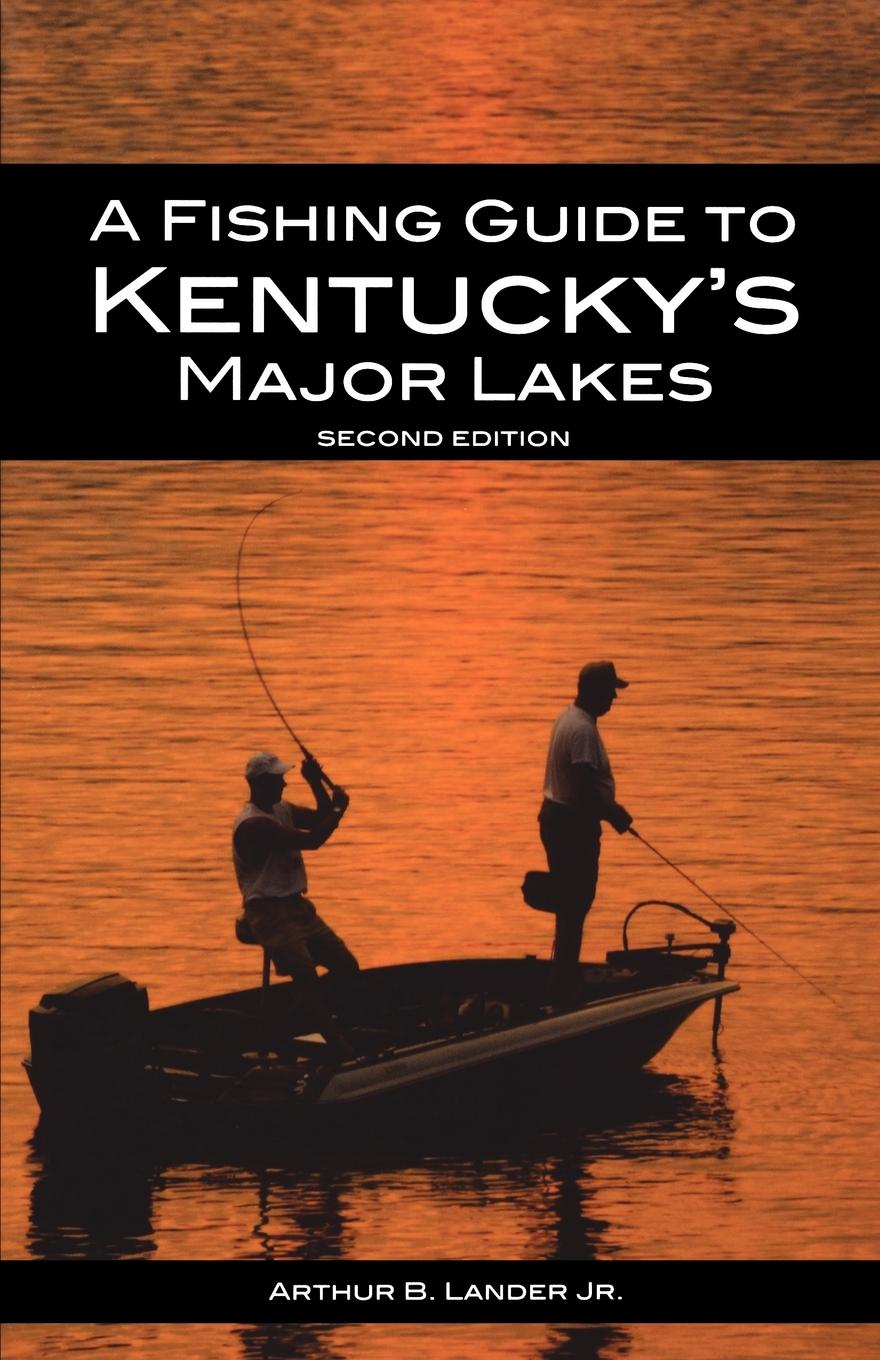A
Fishing Guide
to
Kentuckys
Major Lakes

A
Fishing Guide
to
Kentuckys
Major Lakes
Second Edition
Arthur B. Lander Fr.
THE UNIVERSITY PRESS OF KENTUCKY
Copyright 1998 by The University Press of Kentucky Updated edition 2005
Scholarly publisher for the Commonwealth, serving Bellarmine University, Berea College, Centre College of Kentucky, Eastern Kentucky University, The Filson Historical Society, Georgetown College, Kentucky Historical Society, Kentucky State University, Morehead State University, Murray State University, Northern Kentucky University, Transylvania University, University of Kentucky, University of Louisville, and Western Kentucky University.
All rights reserved
Editorial and Sales Offices: The University Press of Kentucky 663 South Limestone Street, Lexington, Kentucky 40508-4008 www.kentuckypress.com
13 12 11 10 09 7 6 5 4 3
Frontispiece: Fishing for largemouth bass in Taylorsville Lake in early April. Photograph by Ron Garrison.
Library of Congress Cataloging-in-Publication Data
Lander, Arthur B.
A fishing guide to Kentuckys major lakes / Arthur B. Lander, Jr.2nd ed.
p. cm.
Includes index.
ISBN 0-8131-0946-9 (paper : alk. paper)
1. FishingKentuckyGuidebooks. 2. Freshwater fishesKentucky. 3. LakesKentuckyGuidebooks. I. Title.
SH499.L36 1998
799.1109769dc21 97-44130
ISBN-13: 978-0-8131-0946-6 (paper: alk. paper)
This book is printed on acid-free recycled paper meeting the requirements of the American National Standard for Permanence of Paper for Printed Library Materials.

Manufactured in the United States of America

| Member of the Association of
American University Presses |
To Laura, John, and Maggie
CONTENTS

WHY WE FISH
There is no better place to be on a warm spring afternoon than relaxing with a fishing pole in your hand. Fishing is something anyoneregardless of age, gender, or previous outdoors experiencecan learn. To children, fishing is magic. Like planting a row of seeds in the garden, what happens next is hard to comprehend. It does not take long to discover how much there is to appreciate about fishingthe scenery, spending time with family and friends, but most of all those beautiful finned creatures. Hold a shiny, green bass in your hands and that is all the proof you need that nature is infinitely more wondrous than the works of man.
Rising before the sun comes up and going fishing is a celebration of life. The air is so fresh and clean at sunrise. Fishing rejuvenates your spirit and sets your mind at ease. Fishing wipes the slate clean. The mystique of dawn has never lost its appeal. When I was very young my mom and dad would bundle me up in a blanket in the bottom of the boat on foggy mornings. The rock of the boat and the hum of our Johnson Sea Horse outboard motor would put me back to sleep every time.
We spent our vacations fishing. Many a night we would fish for white bass and crappie, with the warm glow of a Coleman lantern fending off the chilly night air. I feel lucky to have been raised by fishermen. Some of the best memories of my parents are from fishing trips we took together as a family. I liked to fish with my parents even when I was a teenager, although we didnt agree on much during those years. When we got out on the lake, the disagreements and arguments didnt seem important anymore. Fishing soothed the tension. Fishing was proof we enjoyed each others company.
Now that I have a family, Im trying hard to make learning to fish as much fun for my children as it was for me. When you take children fishing, your own kids or those of a friend or relative, you cant help but relive some of your childhood fishing memories in the process. Fishing teaches patience and self-confidence, but more importantly it fosters an understanding of how nature can provide for us, if we manage resources competently, with a vision for the future.
Children are eager to learn about nature, especially those who have little if any contact with the outdoors. America has become an urban society, and population experts predict that by the year 2000 almost 50 percent of Americans will live in big cities and the surrounding metropolitan areas. More and more of our youth are growing up completely out of touch with nature at a time when we all need to be more attuned to the complex interrelationships of plants and animals, air and water. When you introduce children to fishing, you are teaching them more than how to bait a hook, run the boat, or carve out fish filletsyou are showing them by example that to love is to teach and share.

Professional bass angler Denny Brauer is an expert at fishing jig and pork rind combinations when bass are shallow and located in heavy cover. This fishing technique is called flippin.
PREFACE
Many changes have occurred in the decade since A Fishing Guide to Kentuckys Major Lakes was first published. Several new lakes have opened, and at others there have been significant changes in fishery management programs. The lakes are being managed on an individual basis today. This reflects a more realistic picture of their biological potential, and allows managers to fine-tune fish populations as never before.
In the last decade there has been a rise in the popularity of predator fishstriped bass, hybrid striped bass, and muskie. These fish have been stocked to take advantage of abundant forage and to decrease the numbers of adult gizzard shad, which compete for food (plankton) with young-of-the-year largemouth bass and other gam fish. The obvious secondary benefit is an increase in fishing opportunities. Hybrid striped bass populations have been established in five major Kentucky lakes, in some cases to supplement declining white bass populations.
To prevent overharvest and increase the average size of fish taken by anglers, daily creel limits have been reduced, and minimum size limits have been lengthened at many reservoirs. These regulation changes, which affect black bass species and crappie more than other species, reflect angler preferences for higher quality fishing experiences in the face of increasing fishing pressure.
As of March 1, 1996, Dale Hollow, Green, Herrington, Laurel, and Martins Fork were the only major lakes in Kentucky that still had a 12-inch minimum size limit on largemouth bass. All of our major lakes likely will have a 15-inch minimum size limit on largemouth and small-mouth bass within the next few years.
Readers will notice that this second edition is much more comprehensive and better organized for quicker access. There are fewer details on marinas and facilities at the lakes, but more emphasis on the current status of fisheries and the fishing tackle and techniques that have been proven successful. Introductions have been added to the books two major unitsThe Fish and The Lakesto provide overviews and perspective. Additionally, about twenty sections have been added which will help anglers find answers when questions arise. Some of the topics addressed in these new sections include who manages Kentuckys major lakes, district fishery biologists, fishing regulations, fishing licenses, U.S. Army Corps of Engineers district offices, how to obtain lake maps, how to report fish and game law violations, illegal fishing methods, catch-and-release, how to fillet fish, zebra mussels, and the Kentucky Department of Travel Development.


